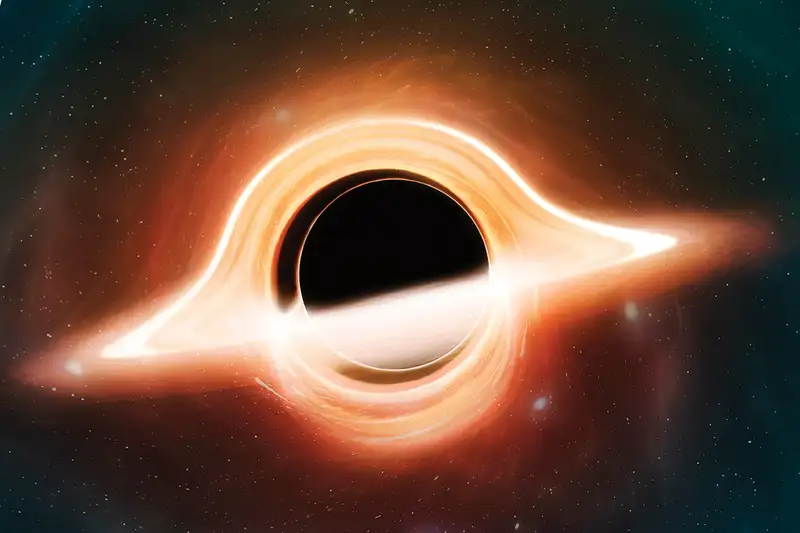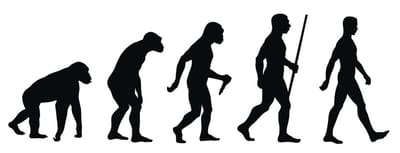Did God Leave A Signature? Quantum Theory for Beginners
Herein, I try to answer, from a theoretical physicist’s frame of reference, an age-old question by St Thomas Aquinas: can God's signature be seen in the universe He created?
Backstory: I grew up with a den full of books, a chessboard, and my Dad's desk used for running a publishing company and balancing the checkbook. And Dad's pipe. I grew up with these 1000s of books, and when, in 1990, my parents separated, I sensed these would never be seen again, and I'd grown up without a TV; this was my childhood collection. I began a nightly ritual of reading the cover, possibly the inside flap and the first page - of each book on the shelves. It took me three weeks. I took two books that were dear to my future.
Only ONE held onto me for the rest of my life...
I took God & The New Physics by Paul Davies to explain the subatomic world. One read is all it takes, and you cannot go back to believing our world is all basketballs, buses, and Bitcoin. Something far too intricate and complicated is lying below the surface to be dismissed once you've seen it. And then I reread it.
And then I followed up with every printed book on either theology or physics, particularly layperson science in an age when the academics were finally reaching back to explain what was happening in physics. I encountered the ecstatic musings one finds when confronted with the quantum realm and why it's so damn consuming.
Through my scientific work, I have come to believe more and more strongly that the physical universe is put together with an ingenuity so astonishing that I cannot accept it as a brute fact... I cannot believe that our existence in this universe is a mere quirk of fate, an accident of history, an incidental blip in the great cosmic drama.
— Paul Davies
It’s within these short parameters of his inspiration in paragraph form that Paul Davies reaches down from the shoulders of his own giants and lets the layman have his experience and expertise in softer language, easier charts, and gentler equations.
The author and much of the subject matter in his other books are esoteric and debatable, and they deal with various issues outside of Quantum Physics. With God & The New Physics, it's a clean slate. And what a beautiful one it is. I am serving up the best the book has to offer.
But since copyrights forbid me to largely rework his work and would require the acquisition of rights, I thought I could do my best by giving carefully chosen words and paragraphs, which I trust is “fair use” as the term implies. I doubt I'd understand a book review on a lump sum of this size. Quantum physics isn't something where you can skip a paragraph and still stay on point. The thing is, Davies' style was so slim and well-worded.
I’m more concerned with the laypeople stuck behind, not knowing how physics came to be, and this ability to project these discussions. Any other discipline ultimately falls into physics. And henceforth, more people ought to be aware of how we got through the 1905’s paper by Einstein to CERN finding the “God Particle” in 2012.
We've had String Theory for fifty years, yet it's amounted to us not knowing if it's right; the math is correct, but there's got to be more to the world than math. Most people know we live in four dimensions, three of space and one of time. But quantum mechanics tells us there must be 7, 11, or 14 dimensions. It must be valid for math to work. But then, what is the math telling us?
Quantum mechanics also has a 'spooky' side where the observer plays a vital role in what happens to a particle. It truly is as if the particle knows it's being watched and "chooses" one thing or another. If you try to leave religion behind and strictly adhere to science, you'll find yourself, in the end, closer to religion. That's how QM plays itself out.
Radiation, say from a clump of uranium-235, has a lifetime (called half-lives) where atoms will decay at a steady rate for thousands of years. But which atom will decay when it's time? We have no idea. It's as if the clump has a mind and dictates which atom will go next. That's how QM plays itself out.
There's something called entanglement where information across millions or billions of light-years seems to be 'instant.' Einstein proved that nothing could move faster than the speed of light, so he was against this “spooky action at a distance,” as he called it. That's how QM plays itself out.
Suppose an atom is in a trough, and it “wants” to get over a hill in the way. In that case, it can “borrow” the energy to “tunnel” through the hill, it will disappear and reappear on the other side of an object, and the energy must be instantly repaid. That’s how QM plays itself out.
God & the New Physics is not a book that will comfort unquestioning believers. Why should it? For them, blind belief is its own comfort. For the rest of us, Davies provides a richness of patient reasoning, and yet another chance to marvel at the universe in which we seem so lucky to maintain precarious and limited leasehold.
— Tim Radford, The Guardian
This is not a book about religion. Instead, it is about the impact of the new physics on what were formerly religious issues. In particular, I do not attempt to discuss religious experiences or questions of morality. Nor is it a science book. It is a book about science and its broader implications. Inevitably, it is necessary here and there to explain some technicalities in careful detail, but I do not claim that the scientific discussions are either systematic or complete. The reader should not be deterred by the thought that he or she is in for some punishing mathematics or strings of specialist terminology. I have tried to avoid technical jargon as much as possible.
The book is primarily intended for the general reader, both atheists and believers, with no previous knowledge of science. However, I hope it also contains some material of real scholarly value. In particular, I do not believe that some of the very recent work on cosmology has previously come to the attention of philosophers and theologians.
This is a great book, I don't see any way to make it simpler; he's done it. He also included many things that could be summarized without giving the whole baby and bathwater to the reader. Suppose you rid the book of some complicated features (which I call his periphery – and they are solidly well-suited for the book, just not a summary). In that case, it’d be suitable for someone to invest an hour reading and at the end come out knowing a great deal about the other side of physics. Much of his speaking on religion can be dismissed; he essentially fights for the ground science now occupies.
_________________________The Beginning
Once, the universe was sucked into something the size of a tennis ball, atom, or basketball; this isn't worth discussing since space had not yet begun to expand, so how big could nothing have been? It was a singularity where everything, including time and space, was broken down. At a point in the past, the ball sprang apart into an insanely hot semi-liquid plasma. In the time it cooled and condensed, it formed simple hydrogen atoms. Next was helium, and in time the universe spread farther and cooled, and after some 13.85 billion years, here we are, marveling at the leftovers of that gigantic explosion. Most of it is still hydrogen/helium; in empty space, there's approximately one hydrogen atom per meter squared.
For certain people the universe has always existed; we're faced with Sir Isaac Newton's Second Law of Thermodynamics - namely, the universe tends to go from order to chaos; stars burn out, buildings fall down, and old people get older. Scientists have called this slide from order to chaos "entropy." Conclusion: the universe did not always exist. And things will always get worse.
The law that entropy always increases holds, I think, the supreme position among the laws of Nature.
—Sir Arthur Eddington, the astronomer who proved the Theory of Relativity correct during an eclipse in Antarctica – light bends around mass.
What has all this got to do with the creation of the universe? First, it illustrates that ideas like ‘infinity’ should not be used sloppily or are likely to produce nonsense. Secondly, it demonstrates that the results often contradict common sense and intuition. This is one of the great lessons of science. These bizarre ideas can only be fully grasped by appeal to mathematics. Human intuition is an inadequate guide — which illustrates one of the principal reasons for the success of the scientific method. By employing mathematics as a language, science can describe situations that are entirely beyond the power of human beings to imagine. Indeed, most modern physics falls into this category. Without the abstract description provided by mathematics, physics would never have progressed beyond simple mechanics.
In his famous retort, Einstein dismissed the question of everything happening due to a prior event that "God does not play dice." Amazingly enough, it is possible to perform an experiment to demonstrate that, unless influences can travel faster than light, atomic systems are indeed inherently unpredictable — ‘God' does play dice.
The very idea of God creating the universe is, as we have already seen, an act that takes place in time. When giving lectures on cosmology, I am often asked what happened before the big bang. The answer, that there was no ‘before’ because the big bang represented the appearance of time itself, is regarded with suspicion — ‘Something must have caused it. But cause and effect are temporal concepts and cannot be applied to a state in which time does not exist; the question is meaningless.
Considering that the quantum theory is now a century old, it is remarkable that its stunning ideas have taken so long to percolate through to the layman. There is, however, a growing awareness that the theory contains some astonishing insights into the nature of the mind and the reality of the external world and that complete account must be taken of the quantum revolution in the search for an understanding of God and existence. Many modern writers are finding close parallels between the concepts used in quantum theory and those of Oriental mysticism, such as Zen. But whatever one's religious persuasions, the quantum factor cannot be ignored.
Before discussing these issues, it must be made clear that quantum theory is primarily a practical branch of physics and as such is brilliantly successful. It has given us the laser, the electron microscope, the transistor, the superconductor, and nuclear power. At a stroke, it explained chemical bonding, the structure of the atom and nucleus, the conduction of electricity, the mechanical and thermal properties of solids, the stiffness of collapsed stars, and a host of other critical physical phenomena.
Uncertainty is the fundamental ingredient of quantum theory. It leads directly to the consequence of unpredictability. Does every event have a cause? Few would deny it. It was explained how the cause-effect chain had been used to argue for the existence of God — the first cause of everything. The quantum factor, however, apparently breaks the chain by allowing effects to occur that have no cause.
The Danish physicist Niels Bohr accepted that atomic uncertainty is genuinely intrinsic to nature: the rules of clockwork might apply to familiar objects such as snooker balls, but when it comes to atoms, the rules are those of roulette. A dissenting, albeit distinguished voice was that of Albert Einstein. ‘God does not play dice, he declared.
The Bohr–Einstein debate is not just one of detail. At the heart of the subject lies the bald question: is an atom a thing, or just an abstract construct of imagination helpful in explaining a wide range of observations? If an atom exists as an independent entity, then at the very least, it should have a location and a definite motion. But the quantum theory denies this. It says that you can have one or the other but not both.
This is the celebrated uncertainty principle of Heisenberg, one of the founders of the theory. It says you can't know where an atom, or electron, or whatever, is located and know how it is moving at one and the same time. Not only can you not know it, but the very concept of an atom with a definite location and motion is meaningless. You can ask where an atom is and get a sensible answer. Or you can ask how it is moving and get a sensible answer. But there is no answer to a question of the sort; ‘Where is it, and how fast is it going?’ Position and motion (strictly, momentum) form two mutually incompatible aspects of reality for the microscopic particle. But what right have we to say that an atom is a thing if it isn't located somewhere or else has no meaningful motion?
If all this seems too mind-boggling or paradoxical to accept, Einstein would have agreed with you. Indeed the world out there exists whether we observe it or not. Indeed everything that happens does so for its own reasons and not because it is being watched. "I cannot believe the moon is not there if I am not looking at it," Einstein quipped. Our observations might uncover the atomic reality, but how can they create it? Actual, atoms and their components might seem to behave in a muddled and imprecise way, but that is only due to our clumsiness in probing such delicate objects.
Quantum theory is one of the most complex and technical subjects to understand, and this brief review can do no more than lift a small corner of the veil of mystery to allow the reader a glimpse of its bizarre concepts. Many of the perplexing features of the quantum theory can be understood in terms of a curious ‘wave-particle’ duality reminiscent of the mind-body duality. According to this idea, a microscopic entity such as an electron or a photon sometimes behaves like a particle or wave; it depends on the chosen experiment. A particle is a different animal from a wave: it is a small lump of concentrated stuff, whereas a wave is an amorphous disturbance that can spread out and dissipate. How can anything be both?
Wave-particle duality is another software-hardware dichotomy. The particle aspect is the hardware face of atoms — little balls rattling about. The wave aspect corresponds to software, mind, or information, for the quantum wave is unlike any other sort of wave anybody has ever encountered. It is not a wave of any substance or physical stuff but a wave of knowledge or information. It is a wave that tells us what can be known about the atom, not a wave of the atom itself. Nobody suggests that an atom can ever spread itself around as an undulation. But what can spread itself around is what an observer can know about the atom. We are all familiar with crime waves, not waves of any substance but waves of probability. Where the crime wave is most intense, there is the greatest likelihood of a felony.
The quantum wave is also a wave of probability. It tells you where you can expect the particle to be and what chance it may have of such-and-such a property, such as rotation or energy. The wave thus encapsulates the inherent uncertainty and unpredictability of the quantum factor.
The result is wave-particle duality, where everything is a wavelike entity until it's observed, then the wave function breaks down, and the subject (proton, neutron, electron) has its measurements. Before that, it is just probability.
Schrödinger's Cat is often used to give this situation a real-world thought experiment. Imagine a cat in a box next to a glass bottle of cyanide. There is a meter and some uranium. If an atom decays, it is measured by the meter, and a little hammer breaks the bottle; the cat dies. So, if we know by when an atom must have decayed, we can say the cat should be dead. But we don't know until we look in the box if the cat is dead or alive.
Before we open the box, the cat is in both an alive/dead phase. That is correct, take a minute to digest it.
Of course, a cat can't be both alive and dead at the same time, but the math works, the cat is in a superposition until an observer looks inside the box and the wave function collapses into one of two possible outcomes. If a cat is to be described as a quantum system, one is forced to conclude that, until the cat is observed by someone or something, it is suspended in a schizophrenic ‘live-dead’ condition, which seems absurd.
Suppose we use a person instead of a cat. Do they experience a live-dead state? Of course not. So has quantum mechanics broken down when it comes to human observers? Physicist Eugene Wigner suggests that the entry of the information about the quantum system into the observer's mind collapses the quantum wave and abruptly converts a schizophrenic, hybrid, ghost state into a sharp and definite state of concrete reality. Thus, when the experimenter looks at the apparatus pointer, he causes it to decide upon either one position or the other, and thereby, down the chain, it also forces the electron to make up its mind. The observer makes the decision merely by looking at the process!
Two great revolutions gave birth to a new physics: the quantum theory and the theory of relativity. The latter, almost exclusively due to the work of Einstein, is a theory of space, time, and motion. Its consequences are as equally baffling and profound as the quantum theory and challenge many cherished notions about the nature of the universe. Never is this more so than in the theory's treatment of time — a subject of intense and longstanding concern in all the world's great religions.
The so-called special theory of relativity, published in 1905, arose from attempts to reconcile an apparent conflict between material bodies' motion and electromagnetic disturbances' propagation. The first casualty of the special theory was the belief that time is absolute and universal. Einstein demonstrated that time is, in fact, elastic and can be stretched and shrunk by motion. Each observer carries around his own personal scale of time, and it does not generally agree with anybody else's. In our own frame, time never appears distorted, but relative to another observer who is moving differently, our time can be wrenched out of step with their time.
In short, Einstein concluded that space was warped around large masses, causing things like the moon to revolve around the earth and the earth to revolve around the sun. It explained all the phenomena we were observing.
Einstein also famously discovered the short little equation, E=mc^2, whereby energy is equal to the mass times the speed of light squared. This is most legendary. All mass has can have an enormous amount of energy in it. Uranium and Plutonium are the best materials for nuclear fuel because they're highly radioactive and unstable. Nuclear reactors have a reactive core immersed in water. When the water gets hot, it creates steam which turns a turbine, that's it. Nuclear reactors make steam; there's no more magic to it. There are cooling rods that are lowered and raised to keep the temperature maintained.
At the Chornobyl plant in 1987, a test was underway, but the rods did not get inserted at the proper time, creating a wealth of heat that burned off the water and exploded. Tons of materials like cesium, uranium, and graphite, things that should never be mixed, grew into lava that started burning down through concrete floors. It threatened the Dnieper River, which flowed into the Black Sea and the Mediterranean. The lava, a large molten hunk of various metals called the Elephant's Toe, stopped short of contaminating the water table.
That is energy from a mass. Now the inversion is true as well, energy turning into mass. The speed of light is 300,000km/h because that is the speed of anything massless; it's as fast as fast gets. If we were in a spaceship going 99.99% the speed of light, we would need more energy to get to the threshold of 100%, except that when we put in more fuel, it turns, instead, into mass, and the spaceship gets heavier.
To put this into perspective, CERN (the European Center for Nuclear Research) sends packets of protons around in a magnetic cavern 200 meters beneath the surface and 26 kilometers around. It sends these protons at 99.99998% of the speed of light. And it sends another packet in the opposite direction at 99.99998% of the speed of light. They are brought together by lasers and forced to collide with the first packet.
We can detect new particles from the explosion, including the fantastic 2016 Higg's Boson or "The God Particle," which had been predicted in the 1960s. For more perspective, getting a single atom up to 100% of the speed of light would take all the energy in the universe. And if we got a rocket up to the speed of light, the crew would be frozen in time, even though to them they were still moving usually, time would slow until it stopped. Light moves so fast that for a photon, the time has stopped. A photon only starts and finishes its life; there is no in-between stage while a photon travels. It is ejected from one atom and absorbed by another without any sense of time.
_________________________The End
This has been a pleasure making a layman's buffet of all things: particle physics.
There are still quarks and String Theory, and maybe if this article is thriving in a sense, Paul Davies doesn't sue me. My brain is all I have. And I'm grateful for the exposure to this world that Paul Davies did and still does for me. He's made me a closet physicist for over 30 years.
Did God leave a fingerprint, a clue? I've always thought if there was a God, he'd have perfectly aligned Orion's Belt. Three stars south in the winter sky look like they're begging to be aligned. That would be a nice sight to behold every night. It would look like God was "there".
Or if he perfectly arranged our planets into a massive heart for our viewing pleasure while we were sleeping. But the acute phenomenal largeness of the known universe should thrill us to think about daily. We're so lucky to have materialized and dragged ourselves while building ourselves and our cultures right up to 2022. And as for the quantum world, though these two theories are seemingly incongruent and incompatible, Einstein and Newton lived in the big world we all experience.
But in the land of things we can't see, it's such a wild card to discover that the particle world is so wild. It's full of surprises. And the language of God is mathematics. It gives him an almost physical presence. A being built out of equations, a huge electric-colored monster in a red room with numbers falling around him. A Quantum God.
There, I've just postulated a revised vision of God. Michelangelo's "God & Adam," where they're about to touch fingers, picture that in your head. The roof of the Sistine Chapple flashing red binary code at you from every direction. And from out of thin air, God is a man exactly looking like that in the painting, except he's alive and made 100% of numbers, equations, and trick questions.
I hope I enlightened people; I worry about the Amish, who are far behind. So if you see one, could you explain this piece to them? And I feel for the North Korean population of people, millions who've never seen a computer or a phone, let alone collapsed a wave function. But the layman can be confident he can now speak clearly when the topic of Quantum Theory gets brought up. There are still gobs of fascinating things in particle physics. There's plenty of fodder for a follow-up article both with myself and the works of Paul Davies if I have his permission.






